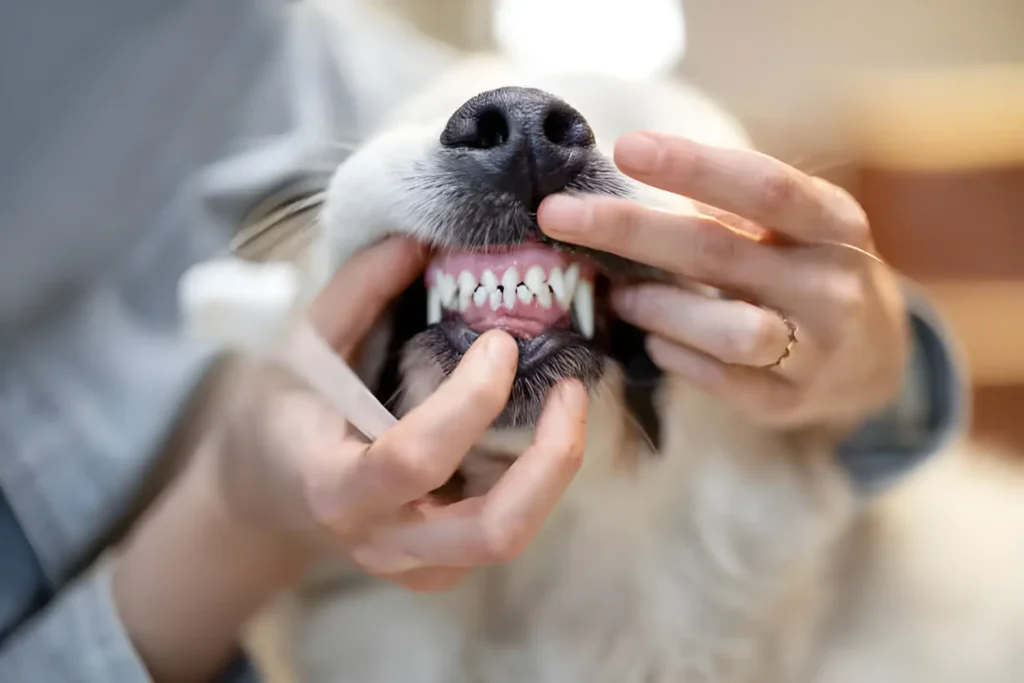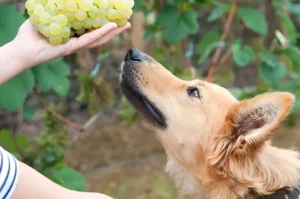Yes, begonias are poisonous to dogs. They contain soluble calcium oxalates, which form sharp crystals that can cause irritation, pain, and even more severe symptoms if your dog eats a significant amount of the plant. The roots and tubers have the highest concentration of these harmful crystals.
Understanding Begonia Toxicity
Begonias may look lovely, but they hide a harmful secret: soluble calcium oxalates. These form needle-sharp crystals in the leaves, stems, and especially the roots. If your dog chomps on a begonia, the crystals irritate and injure the lining of the mouth, throat, and digestive tract. This causes immediate pain and has the potential for more serious complications.
Symptoms of Begonia Poisoning to Watch Out For
- Oral Irritation: Drooling, pawing at the mouth, difficulty swallowing.
- Digestive Upset: Vomiting, diarrhea, decreased appetite.
- Pain: Whining, lethargy, reluctance to move.
- Severe Cases (Rare): Kidney issues, and tremors (these usually only occur with significant ingestion of the roots).
At a Glance: Begonia Toxicity for Dogs
| Plant Part | Severity | Common Symptoms |
|---|---|---|
| Leaf (small amount) | Mild | Drooling, pawing at mouth |
| Leaves/Stems (larger amount) | Moderate | Vomiting, diarrhea, decreased appetite |
| Roots/Tubers | Severe | Vomiting, diarrhea, severe pain, tremors (rare) |
What to Do if Your Dog Eats a Begonia

- Don’t Panic: Most cases of begonia poisoning are mild to moderate.
- Remove Plant Matter: Gently remove any plant parts from your dog’s mouth.
- Rinse Mouth: Use cool water to rinse your dog’s mouth, helping to wash away irritating crystals.
- Monitor & Contact: Observe your dog closely. For mild symptoms, contact your vet for advice. If symptoms are severe or worsening, call a pet poison helpline or emergency vet immediately.
Severity Depends on the Amount Ingested
- A Few Leaves: Might cause mild oral irritation and stomach upset.
- Large Quantity of Plant Matter: Increased chance of more serious symptoms.
- Roots/Tubers: These pose the biggest danger. Seek veterinary assistance right away.
Pet-Safe Alternatives to Begonias
Luckily, there are plenty of gorgeous, dog-friendly blooms to choose from:
- African Violets: Their fuzzy leaves and vibrant flowers add cheer to any space.
- Spider Plants: Easygoing and produce fun, dangling plantlets.
- Swedish Ivy: Lush green foliage with a trailing habit.
- Snapdragons: Colorful blooms with a playful “snapping” action.
- Orchids (non-toxic varieties): Exotic elegance, but double-check the specific orchid type.
Real-Life Story:
Case Study: Quick Action Mitigates Begonia Mishap
While uncommon, even small amounts of begonia ingestion can cause discomfort. For example, Dr. Amelia White DVM, recently treated a young puppy who had gotten hold of a single begonia leaf. The puppy experienced mild drooling and pawing at its mouth. Luckily, the owner noticed the behavior right away and contacted the clinic for guidance. With immediate rinsing and monitoring, the puppy recovered fully within a few hours. This case highlights the importance of pet supervision and knowing what to do if your dog ingests a potentially toxic plant.
Pet-Proofing Your Garden
A safe outdoor oasis for your pup requires more than just picking the right plants. Try these strategies:
- Thoughtful Placement: Put dog-friendly plants within easy reach, and keep potentially harmful ones in higher spots or protected areas.
- “Leave It” Training: This basic command is invaluable in preventing your dog from investigating tempting greenery.
- Watchful Eyes: Even well-behaved dogs need supervision outdoors. Your presence helps deter them from getting into trouble.
Conclusion
Begonia’s vibrant blooms can add a touch of beauty to your home, but it’s crucial to remember their toxicity to dogs. By understanding the risks, taking preventative measures, and knowing how to respond in case of ingestion, you can keep your furry companion safe and healthy.
The photo featured below the post headline is Credit: Pinrath Phanpradith/istockphoto
I hope you find this post helpful and informative. If Yes’ feel free to share it with your friends!
Frequently Asked Question
What part of a begonia is the most poisonous?
The roots and tubers pack the biggest punch of harmful oxalates.
My dog took a bite of a begonia leaf, should I worry?
A small nibble on a leaf might cause a bit of irritation, but often dogs won’t show any signs. Still, watch your pup closely. If you notice any concerning symptoms or if your dog seems unwell, don’t hesitate to call your vet.
Are all types of begonias toxic to dogs?
Yes, all varieties of begonias contain soluble calcium oxalates, making them potentially harmful to dogs. This includes popular types like wax begonias, tuberous begonias, and angel wing begonias.
Are angel wing begonias poisonous to dogs?
Yes, angel wing begonias, like all begonias, contain soluble calcium oxalates. The roots and tubers pose the highest risk, but any part of the plant can cause discomfort or more serious symptoms if ingested in sufficient quantities.
Are tuberous begonias poisonous to dogs?
Yes. While their showy flowers are beautiful, tuberous begonias contain the same harmful compounds as other begonia varieties. Their tubers, in particular, pose a higher risk for severe reactions due to their concentrated oxalate content.
Are begonia rex toxic to dogs?
Yes, begonia rex varieties also contain the harmful soluble calcium oxalates. Keep these beautiful houseplants out of reach of curious canines.
What is the most poisonous plant for dogs?
There’s no single “most poisonous” plant. Several common plants pose severe dangers to dogs, including:
Lilies (can cause kidney failure)
Sago palm (causes liver failure)
Oleander (disrupts heart function)
Castor bean (deadly in small amounts)
Azalea (cardiovascular and digestive issues)
Can my dog die from eating a begonia?
While death from begonia poisoning is rare in dogs, it’s possible if a large amount of the roots or tubers is consumed. Even with less severe ingestion, the experience can be very painful for your pet. Prompt action and veterinary consultation decrease the risks of complications.
How can I tell if my dog has been poisoned by a begonia?
Look for the signs of begonia poisoning mentioned earlier in the article: drooling, oral irritation, vomiting, diarrhea, lethargy, and in severe cases, tremors.
My dog ate a small amount of begonia, should I be worried?
Small quantities might cause a bit of discomfort. Monitor your dog closely for a few hours. If symptoms worsen or your dog seems unwell, reach out to your vet for guidance.
Is there a first aid kit for pets I can keep on hand?
Absolutely! A basic pet first aid kit should include essentials like saline solution for rinsing, gauze, gloves, and a pet-safe thermometer. Your vet can recommend specific additions based on your dog’s breed and health history.
What resources are available if I think my dog has eaten a poisonous plant?
For immediate guidance, contact your veterinarian, the ASPCA Animal Poison Control Center ([Phone Number]), or a pet poison hotline. Have as much information about the suspected plant and the amount ingested as possible.










